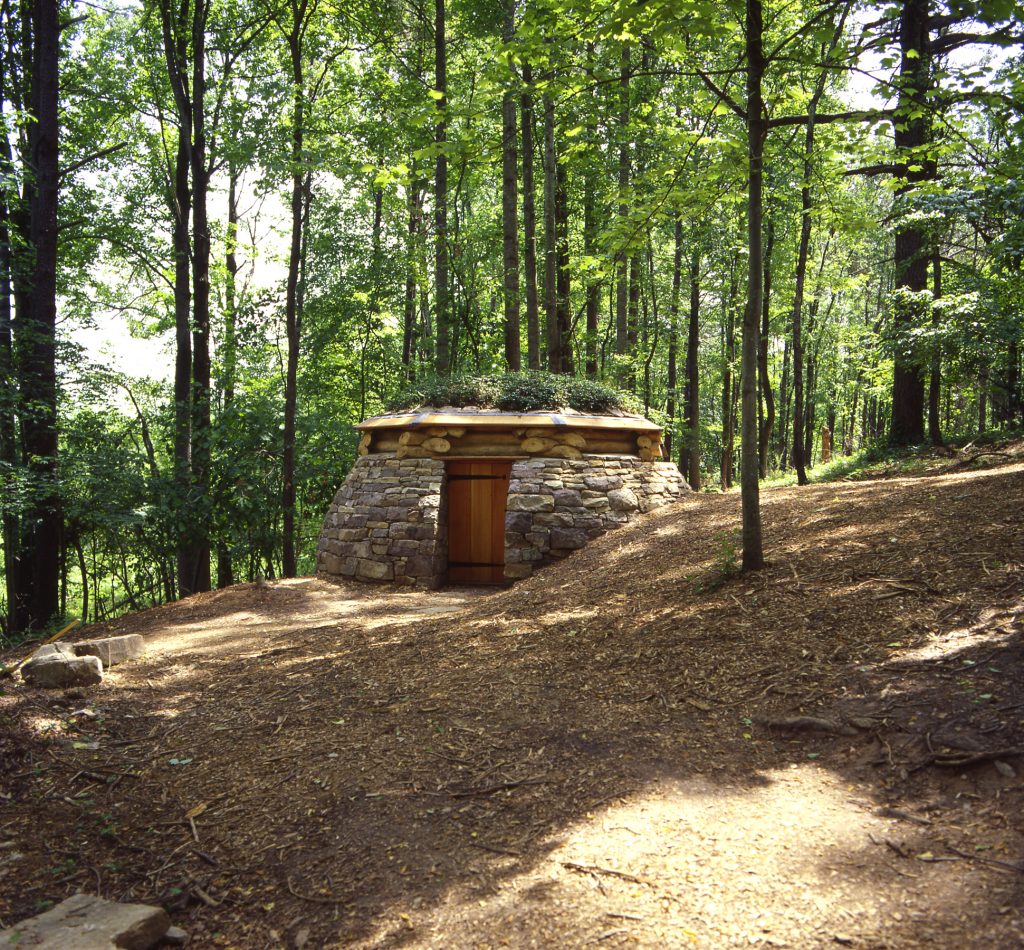Activity Idea: Cloud Chamber for the Trees and Sky (Quick Tip)
Use the following strategies with Chris Drury’s Cloud Chamber for the Trees and Sky
- Vision [science]
Identify the parts of the eye and brain that are responsible for vision. Create a diagram that illustrates how we process visual information. Compare this process to the way the Cloud Chamber functions. Consider how long it would take for our eye to be fully attuned to the visual information in the dark chamber.
- Camera Obscura [art, science]
Create a camera obscura using shoeboxes or your classroom. (See https://www.getty.edu/education/teachers/classroom_resources/tips_tools/downloads/aa_camera_obscura.pdf for details.) Choose a subject for a drawing. Draw this subject using only your hand and eye. Draw the same subject using a camera obscura. Compare these drawings and consider why artists use this tool to recreate what they see.
- Ephemeral Nature Art [science, art]
Create a temporary artwork using natural materials that you find on a walk in the woods. Photograph your artwork to document your idea. Consider how the materials you have used will survive over time. Identify which materials will deteriorate first. Discuss why artists might make artworks that are ephemeral.
- All Five Senses [language arts, science]
The cloud chamber focuses on our sense of sight. Which of our other senses do we use to understand the natural world? Take a walk in the woods or to a park. Make a detailed list of what you hear, smell, touch, taste, and see in this setting. Write a poem about this environment using adjectives from your list.
- Sky as Subject [language arts, art]
The artist helps us see the sky—a part of nature we often take for granted. Select another element of nature that we see everyday, but may not notice in detail. Create an artwork or write a story that explores this everyday element.

